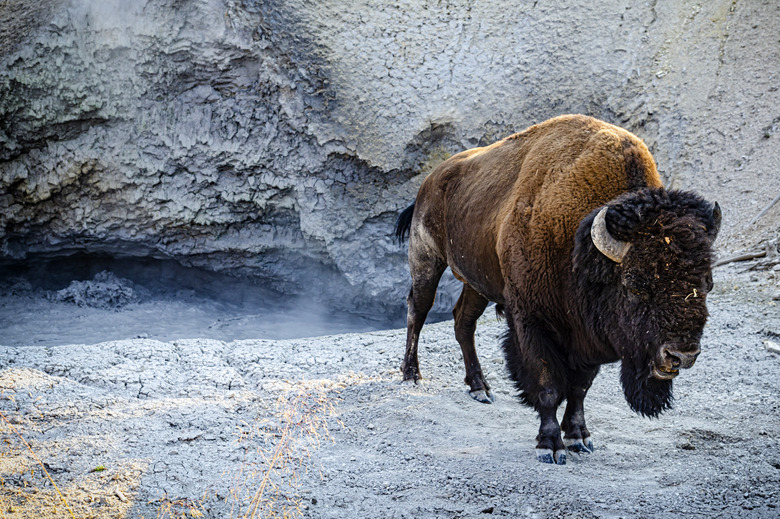Plants & Animals Native To North Dakota
North Dakota is still primarily a rural state. It boasts mountains, grasslands and prairies, which all provide an array of ecosystems that support an eclectic list of wildlife. While some species, such as the black-tailed prairie dog and golden eagle, are considered threatened, the state remains a fertile habitat for a wide array of flora and fauna.
Mammals
Mammals
Lewis and Clark were the first American explorers to note and record some of the wildlife native to North Dakota. Many of the mammals they observed in the wild can be seen in the Dakota Zoo in Bismarck. North Dakota's plains and prairies are home to species such as the American bison, American elk, bighorn sheep, grizzly bear, moose, mule deer, pronghorn antelope, white-tailed deer, wild turkey and red fox.
Birds of Prey
Birds of Prey
An array of raptors are found throughout North Dakota. The Cooper's hawk makes the state's Pembina Hills and Turtle Mountains home and can be seen from April through October. The northern goshawk is indigenous to the western United States, Canada and Alaska. While they don't breed in the North Dakota, they do winter there. The sharp-skinned hawk is a small raptor, about the size of a blue jay. It's found in the Turtle Mountains and in wooded areas along North Dakota's rivers. The golden eagle, a threatened species, can sometimes be spotted throughout the badlands of North Dakota and the upper reaches of the Missouri River in the western part of the state.
Native Wildflowers: The Bean Family
Native Wildflowers: The Bean Family
North Dakota's grasslands and prairies have an abundance of native wildflowers. One of the largest groups is the bean family (Fabaceae) with more than 30 species. Examples include the leadplant, which can be found throughout the state's prairies and is noted for its dark-purple spikes. It can get as tall as 40 inches. The lavender milk-vetch grows statewide and is one of North Dakota's most common milk-vetches. It grows up to 12 inches tall. The white prairie clover is found in nearly every North Dakota County. It appears between mid-June and August and was used by Native Americans for food, teas, dyes and arrow shafts. The golden pea, or false lupine, is a plains dweller found in eastern North Dakota. Ten inches tall with golden-yellow flowers, its reputed to be poisonous to livestock and humans.
Native Wildflowers: The Lily and Rose Families
Native Wildflowers: The Lily and Rose Families
After the bean family, the lily family (Liliaceae) and rose family (Rosaceae) are some of the most common species of native flowers in North Dakota. The lily family boasts over 3,800 species and 310 genera, such as the edible onion, garlic and asparagus. Some of the most common lily genera native to North Dakota include the white wild onion, the mariposa lily, the wild lily, white camas and the narrowleaved death camas. Wildflowers in the rose family that are North Dakota natives include little rose, tall cinquefoil, early cinquefoil, purple avens and prairie wild rose — the state's official flower.
Cite This Article
MLA
Dumas, Robert. "Plants & Animals Native To North Dakota" sciencing.com, https://www.sciencing.com/plants-animals-native-north-dakota-8199533/. 22 November 2019.
APA
Dumas, Robert. (2019, November 22). Plants & Animals Native To North Dakota. sciencing.com. Retrieved from https://www.sciencing.com/plants-animals-native-north-dakota-8199533/
Chicago
Dumas, Robert. Plants & Animals Native To North Dakota last modified March 24, 2022. https://www.sciencing.com/plants-animals-native-north-dakota-8199533/
